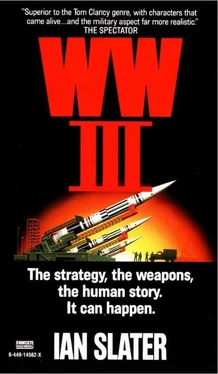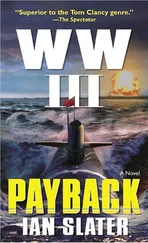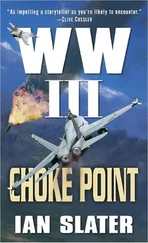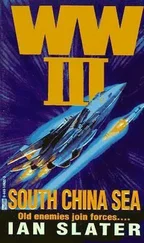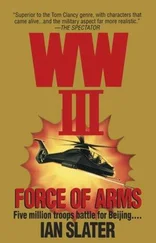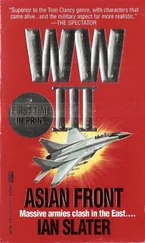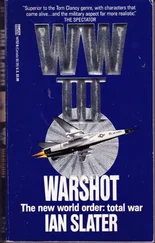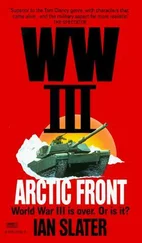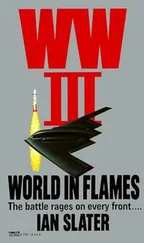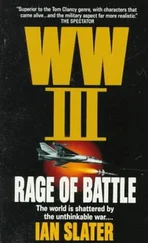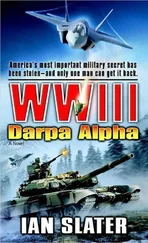It was an enormous advantage. And it now became clear to CINCHAN, in Northwood, and ACNE — Allied Commander Northern Europe — in Kolsas, Norway, why in the prewar years the Soviets developed an obsession with shadowing any Allied ship they could, often using their fishing trawlers. It had been an attempt to make up for their lack of bases on the continental shelves, which the Americans possessed. The Soviets had been shadowing the NATO ships in those years not just for information about size and armament but really operating as seaborne early-warning stations in the event of war.
“Yes,” conceded the admiral, looking over at the chart of the North Atlantic. “They’ve taken a drubbing, all right, but that doesn’t preclude a trap. They know they have inferior search capabilities. Question is, gentlemen, what do they have in mind to compensate for it? What are they up to?” He reached over the broad map of the North Atlantic, his hand brushing the 170-mile-wide Iceland-Faeroe Gap. Had the Russians feinted here on the western flank while using the unusually extended summer ice sheet as a roof to slip their best subs through the Greenland-Iceland Gap to the west? NATO’s bombs and torpedoes couldn’t penetrate the ice, other than by blowing holes in it, which pack ice quickly refilled. “Using one choke point to take punishment, one to slip their right flank past us, dividing our force.”
“Rather a bad mauling for a trap, I should think,” suggested Newsome’s PR assistant, a commander who, rumor had it, had risen very quickly because he’d married another admiral’s daughter. The commander glanced at the tally sheet. Of the eleven nuclear subs sunk, nine were Alfa II-class nuclear attack boats out of Leningrad’s Sudomekh yard. With titanium alloy hulls for deep water, a submerged speed of over forty knots, and fifteen thirty-mile homing torpedoes, the Alfa II was the “Rolls-Royce” of the Russian attack boats. The commander was telling the reporter that the Alfa could dive below the crush depth of most other subs, including many of the Americans’.
“Does the depth make that much difference to a torpedo?” asked the reporter. “I thought those Mark-48s could get anything.”
“They can, old boy. Problem is, if you get deep enough, you’re much safer. At three thousand feet they can even beat our Caesar network.” He meant the North Atlantic section of the SOSUS network, and Admiral Newsome was getting tired of him. Perhaps he was promoted because he was married to an admiral’s daughter. God help us, thought Newsome, if he gets to flag rank.
The officer of the day walked in, and the PR commander gave him the tally sheet with the same bonhomie with which he’d been nattering away to the reporter. “Bloodied their nose a bit!”
The admiral was frowning, still looking worriedly at the GIUK Gap, eyes flitting back between the shallow shelf about Iceland and down toward the deeper Labrador and Newfoundland basins. A lot of water to hide in there.
The OOD looked down the score sheet, letting out a low whistle, joining the commander’s spirit of celebration. It was as if they’d both sunk the lot themselves. “Seventeen!” he said. “I say, Freddie. Well done!”
“Yes,” said the admiral, without looking up. “That only leaves a hundred and thirty-six.” The two commanders looked at each other abashedly as the admiral continued. “You mustn’t get caught up too much in the numbers, Freddie. Don’t want to damper your enthusiasm. I understand — it’s a good start. Eleven nuclear subs would mean crippling the U.K. fleet, or any other European power, for that matter. But remember the Russians lost twenty million in World War Two, a colossal number of tanks and ships — mainly given them by the Americans, of course. Point I’m making is, it’s a big country. An enormous country. It can absorb big losses. What we have to worry about is those blighters who got through here under the ice.” The admiral told the reporter he’d have to excuse them. When the reporter had gone, Newsome asked the OOD to tap in the intercept vectors, given the Soviet subs’ average rate of speed, forty-two knots for the SSNs, seventeen for the diesels. “Let’s have a vector first for the nuclear subs alone.”
“Nuclear subs…” The OOD entered the information into the computer. “East of the Labrador Sea — approaching the edge of the basin. Five hundred miles south of Greenland’s Kap Farvel.”
“English designations?” said Admiral Newsome. He was a stickler for the use of English in NATO — some horrible mistakes had been made because of similar-sounding names.
“Ah yes, sorry, sir. That’s five hundred miles southeast of Cape Farewell.”
“Yes… well, I just hope it won’t be farewell for our first convoy,” said the admiral. “Let’s have the vector for the diesels, will you?”
Behind him he could hear the array of computers and telexes as the NATO commands were feeding in not only results of the naval battle at the Iceland-Faeroe Gap but the SITREPs in Western Europe. Fourteen Soviet-Warsaw Pact divisions had broken through on the North German Plain and were now attacking the low countries into Belgium toward the channel ports. If they weren’t pushed back, where the hell would the NATO convoys from the United States dock? France still hadn’t come in.
“Diesel-electrics, fifty-five hours at least — unless they run on the surface. Unlike the nuclear boats, of course, they’d pick up a few knots on surface. Anywhere from two to five knots. That could put them ahead some.”
“I hardly think they’ll risk open running,” proffered the commander.
“I agree,” said Admiral Newsome. “They’ll keep the diesels for a return convoy, I suspect — if we have any bloody ports left in Europe by then.”
“Well, if they do, sir,” said Freddie, “I’d say they’re asking for trouble. Being diesels, they’ll need service boats, and we could pick them off like ducks.”
“They have snorkels,” the admiral reminded him.
“Of course, sir. I wasn’t thinking of the snorkels giving them away, but refueling’s another business. Then they really are sitting ducks. Sir.”
“Twenty thousand miles on one tank, Freddy. Those chaps can go a long way before they need to come up for refueling. What’s this Three Lib?” asked Newsome, pointing to the printout.
“Well, they’re too slow to hit Convoy R-1, sir — if that’s what you’re worried about?”
“Can’t do much about the R-1 now, Freddie. Too far south. Afraid it’s on its own.”
In the Pentagon, Chief of Staff General Gray was on the telephone with the president. The chief executive’s question was, “Can we hold the Taegu perimeter?”
“I honestly don’t know, Mr. President,” replied Gray. “The Seventh Fleet is in a much better position now to strike the peninsula, but the weather’s not so good.” The next question was, how did bad weather affect Smart bombs, infrared guided missiles, and so forth?
“They’re superb, Mr. President, but as yet we can’t be sure we’re hitting enemy targets. The NKA are continuing to move rapidly, and they have civilians on the munitions trains as well. If we could restrain some of the television networks and press photographers from showing refugees holding up signs and—”
“I want up-to-date contingency plans for withdrawal, General, as well as for reinforcement. National Security Council meeting is at four-thirty.”
“Very good, sir.”
* * *
General Gray had a plan for both situations, but each one, as everything else, depended on securing safety of movement between Japan and Korea, and the Seventh Fleet was busy fending off incoming attacks from NKA MiG-29s from fields so close to the Yalu — the Chinese border — that they might as well have been in China itself. But the fighter pilots of the Seventh Fleet understood that to cross the Yalu was to invade China.
Читать дальше
